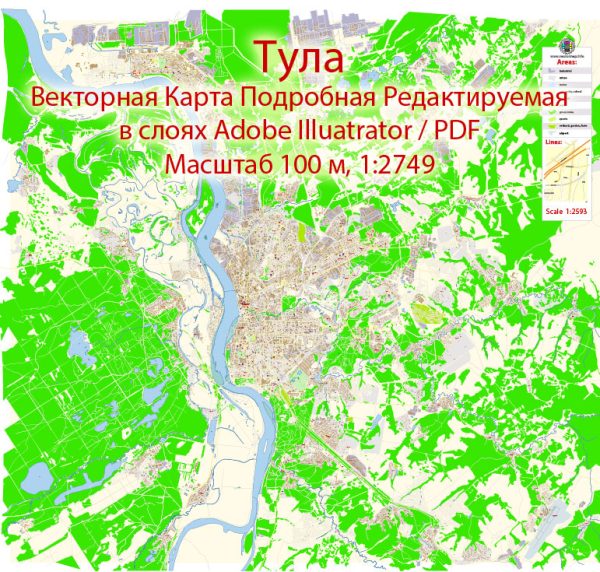Tula is a city located in Russia, specifically in the western part of the country, about 193 kilometers (120 miles) south of Moscow. It is the administrative center of the Tula Oblast, which is a region within Russia. Tula has a rich history and plays a significant role in the cultural and industrial landscape of the country. Here’s a description of Tula’s urban development:
- Historical Significance: Tula is one of Russia’s oldest cities, with a history dating back over 870 years. It was founded in 1146 and has played a vital role in Russia’s history, particularly as a center for trade, industry, and defense.
- Architectural Heritage: The city features a mix of architectural styles, with a blend of historical and modern structures. Notable architectural landmarks include the Tula Kremlin, an ancient fortress, and the Assumption Cathedral, a historic Russian Orthodox church.
- Industrial Center: Tula has a long-standing reputation for its industrial and manufacturing sectors. Historically, it has been known for its arms and weaponry production, including the famous Tula Arsenal, which dates back to the 18th century. Today, Tula’s industry extends to various manufacturing sectors, including machinery, metallurgy, and food production.
- Modern Infrastructure: The city has modern infrastructure with well-developed road networks, public transportation systems, and utilities. Tula also has a growing number of commercial and residential developments, reflecting its status as a regional economic hub.
- Cultural and Educational Institutions: Tula is home to several cultural and educational institutions, including museums, theaters, and universities. The Tula State Museum, for example, houses a vast collection of historical artifacts and artworks. The city’s educational institutions contribute to the region’s intellectual and cultural life.
- Green Spaces: Tula features parks and green spaces that provide residents and visitors with recreational areas. These areas offer opportunities for outdoor activities and relaxation within the urban environment.
- Residential Areas: Tula has a range of residential neighborhoods and housing options, from historic buildings in the city center to more modern apartment complexes on the outskirts. The city has been expanding to accommodate its growing population.
- Economic Diversity: While Tula has a strong industrial base, it has diversified its economy in recent years. The city is home to a range of businesses, including technology startups and service industries, contributing to a more balanced economic landscape.
- Transportation: Tula is well-connected to Moscow and other major cities in Russia through a network of highways and railways. The city also has its own airport, facilitating regional and international travel.
- Urban Planning and Development: Like many Russian cities, Tula has experienced urban development and revitalization efforts to improve the quality of life for its residents. These efforts often include infrastructure upgrades, beautification projects, and the preservation of historical landmarks.
In recent years, Tula has been evolving as a dynamic city, blending its rich historical heritage with modern urban development and economic growth. It continues to be an important center in Russia, both culturally and industrially.


 Author: Kirill Shrayber, Ph.D.
Author: Kirill Shrayber, Ph.D.